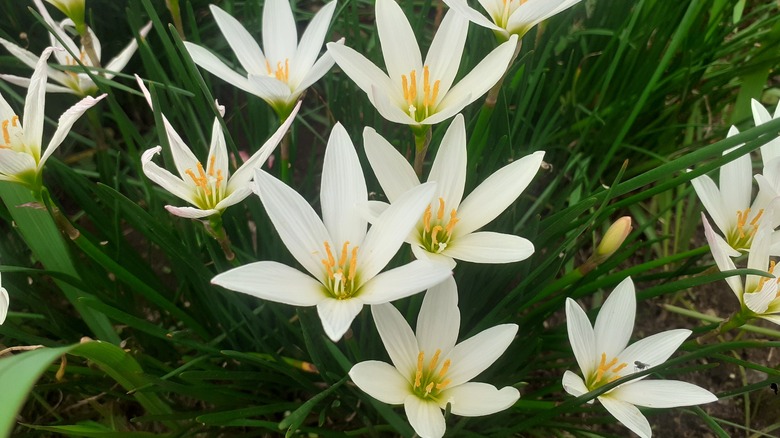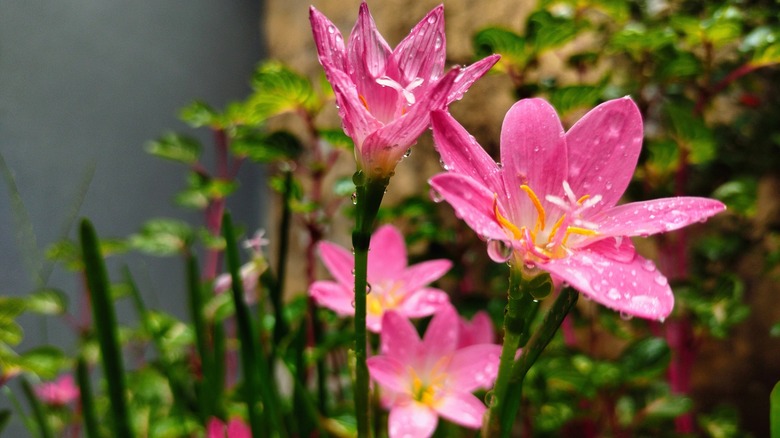Stunning Low-Maintenance Rain Lily Varieties That Thrive In Summer Heat
Whimsical rain lilies appear like magic shortly after heavy rains and fill gardens with charming star-shaped flowers. With over 70 types of rain lilies to choose from, you have many options for color and bloom time. While some varieties only bloom in spring, disappearing for the rest of the year, many other rain lilies thrive through the summer heat and provide twinkles of color in the garden all season long. Some of the best heat-tolerant rain lilies for summer gardens include the pink rain lily (Zephyranthes grandiflora), yellow rain lily (Zephyranthes citrina), evening rain lily (Zephyranthes drummondii), and most rain lilies in the genus Habranthus.
While the name "rain lily" is used for plants in both the Zephyranthes and Habranthus genera, they all require similar care and are part of the larger Amaryllidaceae family. Native to the Americas, rain lilies are generally perennial in zones 7 through 10 and can also be grown in colder zones as long as the bulbs are protected or lifted for the winter. Rain lilies are impressively low-maintenance plants as long as they are planted in an appropriate location.
Caring for summer-blooming rain lilies
Tough plants that prefer not to have their bulbs disturbed, rain lilies thrive in soil that's moist but not soggy, as they appreciate good drainage. While they can handle drier soil too, they are unlikely to bloom well and may quickly go dormant if they aren't given enough water. They require little to no fertilizer to grow well in most locations, though they do prefer neutral to slightly acidic soil pH. Rain lilies also require full or partial sun to grow their best. Because they are toxic, these plants are rarely bothered by deer, squirrels, or other animals. (They're toxic to dogs and cats too, so don't plant them anywhere a pet can get at them.)
Rain lilies are generally purchased as dormant bulbs or as live plants, but many can also be grown from seed. While seeds are not widely available for sale, they can be collected and shared from existing flowers on many types of rain lilies. Sadly, the beautiful pink rain lily does not generally set seed and can only be propagated from offsets of an existing bulb.
Using rain lilies in the garden
Thanks to their love of water, rain lilies are ideal candidates for growing in a rain garden. This ensures they have plenty of moist soil with little additional irrigation required from you. As most species are relatively low-growing, they work best towards the front of garden borders where they won't be overshadowed by larger plants. Rain lilies also grow well in containers as long as they are watered regularly. This is an especially good option for gardeners in colder climates who can simply move the whole flower pot to a protected location in winter.
The evening rain lily, as its name suggests, opens in the evening, making it a great option for pairing with other plants that bloom at night. If you're creating a moon garden, its fragrant star shaped flowers are sure to fit right in. It is important that gardeners with pets and young children take care when growing rain lilies though, as they can be quite toxic and ingestion can potentially even result in death.


